2023-09-25|撰文者:陳貺怡 (巴黎第十大學當代藝術史博士/國立臺灣藝術大學美術學系教授)
In 2011, Wu abandoned his stable teaching career without any hesitation, followed by his travel to Aix-en-Provence, the hometown of Paul Cézanne (1839-1906), where Wu thenceforth devoted himself entirely to pursuing a new career as an artist and, just like Claude Monet (1840-1926) and Cézanne, began to sketch from nature in different places. Unquestionably, painters sketch from nature not simply for reasons of representing natural elements such as trees, rocks, and landscapes, but also for the purpose of studying and understanding nature, especially after the invention of photography and pigment tubes as well as the rapid advances in optics and chromatics in the nineteenth century, which prompted painters to commune with nature, to experience this world with their senses and perceptions, and to bring painting into the realm of philosophy. This reminds us of the following facts. Charles Gleyre (1806-1874), a painter of Academicism, exhorted his pupils: “Nature serves well as an element of study, but it offers no real interest. To evolve a style is something more than this.”[1] However, through his repeated, sketch-mediated observation of nature, Monet, as a pupil of Gleyre, argued: “I really started to understand nature. I also learned to love it.”[2] Likewise, Cézanne strongly advocated: “Painters must return to nature, for it is the best instructor.” In his writing titled “Cezanne’s Doubt,” Maurice Merleau-Ponty (1908-1961) intelligently interpreted how artists experience natural landscapes: Cézanne could neither adhere to the route of Classicism and start utterly with a rational understanding of nature, nor follow the footsteps of Impressionism and merely give sentimental expression to nature, because “everything comes to us from nature.”[3]
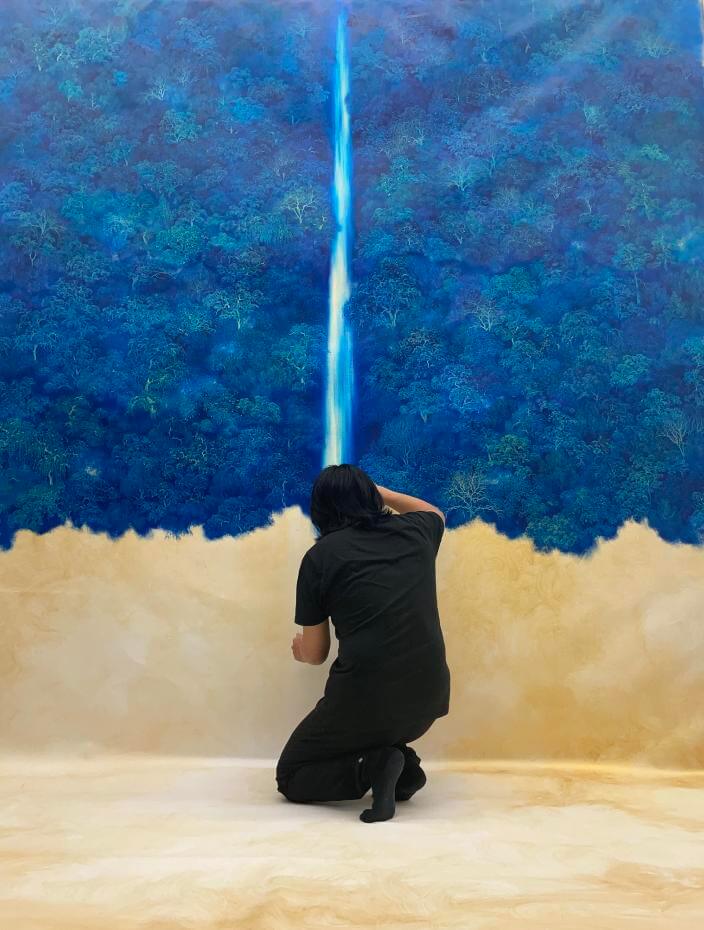 Wu, Kuan-Te_Great Awakening_500x300cm_Oil on Canvas_2023.© Ever Harvest Art Gallery
Wu, Kuan-Te_Great Awakening_500x300cm_Oil on Canvas_2023.© Ever Harvest Art Gallery
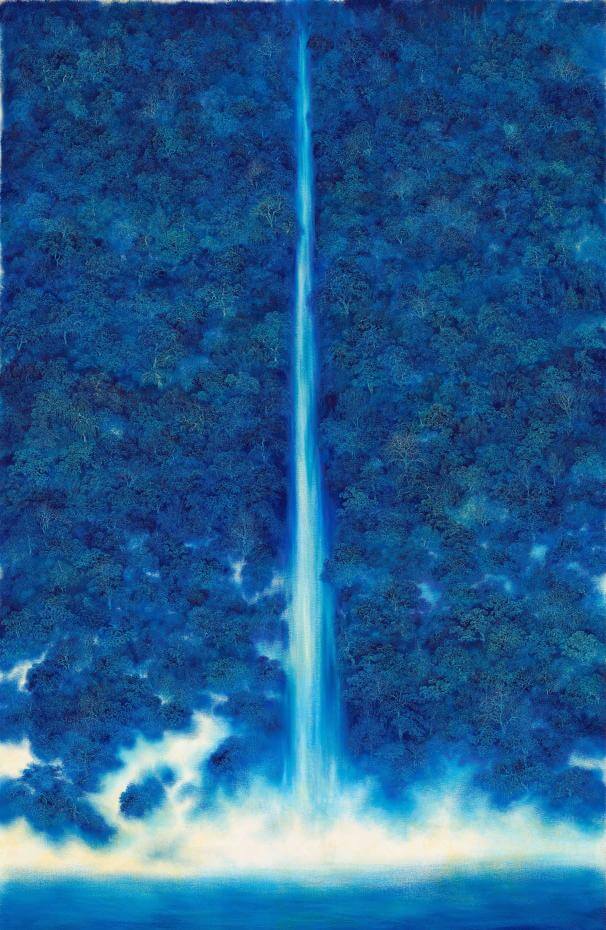 Wu, Kuan-Te_Great Awakening_500x300cm_Oil on Canvas_2023.© Ever Harvest Art Gallery
Wu, Kuan-Te_Great Awakening_500x300cm_Oil on Canvas_2023.© Ever Harvest Art Gallery
Wu holds fast to his faith as an ardent devotee of nature in a similar way. He learns from nature, treading such a path of observation, experience, meditation, and comprehension. In his statement about his works, Wu accentuates the humbling experience that everyone can have when roaming mountain forests or wandering the vast earth. Nonetheless, the momentum of sketching from nature doesn’t stop here. Painters do not draw whatever they see when they sketch from nature. Merleau-Ponty asserted that “the painter’s vision is not a view upon the outside,” in as much as “the mind/spirit can be seen and read in vision […] and the eyes materialize non-mental things that open to the mind.”[4] The thoughts and visceral thrills painters have when facing nature are insufficient to form any painting, because the mind can’t paint. To turn the world into paintings, the process from the eyes via the mind to the hand is indispensable. Therefore, paintings are tantamount to the fusion of objects and spirituality, whilst nature is its very fountainhead. In this sense, Wu intends not so much to “conquer” nature as to try his utmost to emulate Cézanne, that is, to “find an inner respiratory rhythm,” to “listen to the symphony of the wind howling in the trees,” to “revel in the moistness and fragrance of earth,” and even to “commune with nature through deep breaths.” It bears comparison with the state of “oneness of heaven and humanity in which humankind is an integral part of nature.” This is also the reason why Wu titled this exhibition “Amid Breaths.” Absolutely, further analysis and explication are required with regard to the way in which Wu transmutes his spiritual harmony with nature and his epiphanies therefrom into his paintings.
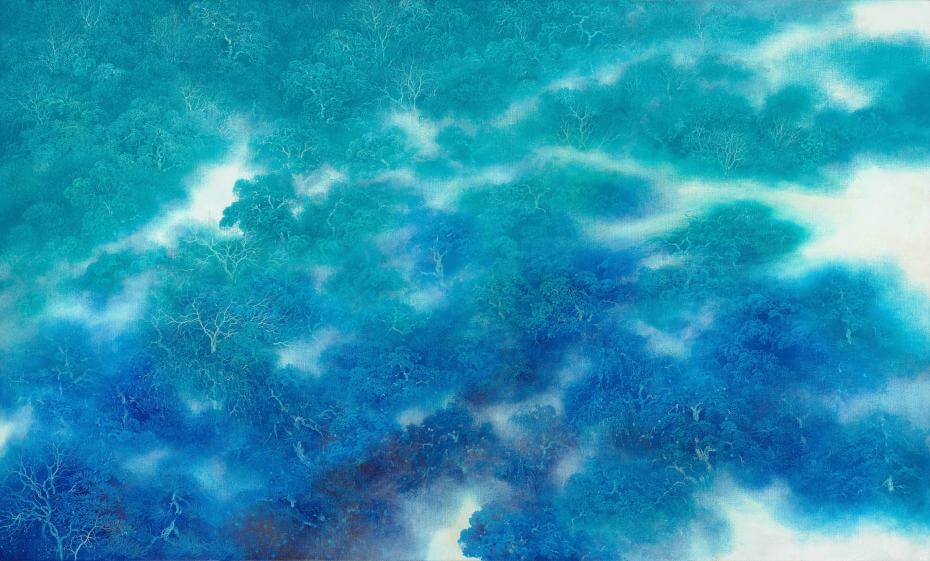 Wu, Kuan-Te_Soaring Clouds_97x163cm _Oil on Canvas_2020.©EveHarvest Art Gallery
Wu, Kuan-Te_Soaring Clouds_97x163cm _Oil on Canvas_2020.©EveHarvest Art Gallery
 Wu, Kuan-Te_Back to original_300x900cm_Oil on Canvas_2017-2018.©Ever Harvest Art Gallery
Wu, Kuan-Te_Back to original_300x900cm_Oil on Canvas_2017-2018.©Ever Harvest Art Gallery
Wu’s oeuvre might still be categorized as “landscape painting,” since his works tend to feature the elements of this genre, such as trees, branches, leaves, clouds, mist, starry skies, sunlight, waterfalls, water surfaces, and so forth. Observing his paintings carefully, we can discern that Wu knows well how to forge his career by standing upon the shoulders of giants. In addition to seeking the conscious expression of immersion in landscapes as much as Cézanne did, Wu has been profoundly influenced by Monet’s awe-inspiring art series Water Lilies (1897-99). In his twilight years, as everyone knows, Monet secluded himself in a garden at Giverny where he continually portrayed the water lily pond from a close-up angle of depression. Monet had been consumed by passion for waterscapes since his early life. It is noteworthy that representing water in landscape paintings has always been a task so challenging as herding cats, because it involves opposite yet complementary concepts, such as light and shadow, motion and stillness, fictionality and reality, as well as rigidity and fluidity. From the 1890s onward, Monet’s depictions of water surfaces had exhibited an astonishing degree of freedom. His diversified, variegated brushstrokes successfully created a vibrant atmosphere of a riotous profusion of colors, and graphically highlighted the material properties of the pigment. As a matter of fact, Monet had excelled in using pigment and brushstrokes to represent natural textures of all stripes, such as venations, waves, mist, swards, snowflakes, soil, rocks, and so forth. Unveiled in 1927, Monet’s last decorative painting for the Musée de l’Orangerie marked a genuine turn, a fundamental shift in perspective. In fact, Monet seemed to be increasingly concerned about how the viewers should view his paintings. His tour de force Water Lilies at the Musée de l’Orangerie apparently transcends the physical confines of easel painting, hence the ensuing extensive discussions. This work not only evokes the imagery of the “Panorama,” a widely popular public entertainment facility in the nineteenth century, but also guides the viewers into “an aquarium of flowers” above and below the water surface. The scale of this work is so epic that it is nothing less than an abstract painting when viewed up close, and an accurate, vivid portrayal of nice scenery when viewed from a distance. No wonder Clement Greenberg (1909-1994) claimed that no other painter than Monet in the later period of his career was able to challenge the established rules of painting, for Monet’s last large-scale paintings are nothing if not homogeneous, decentered, and polyphonic. Specifically, the composition is densely woven with identical or similar elements that repeat themselves, which inspired Abstract Expressionism in postwar New York. Famous painters like Jackson Pollock and Mark Rothko were little more than ardent disciples of Monet.[5]
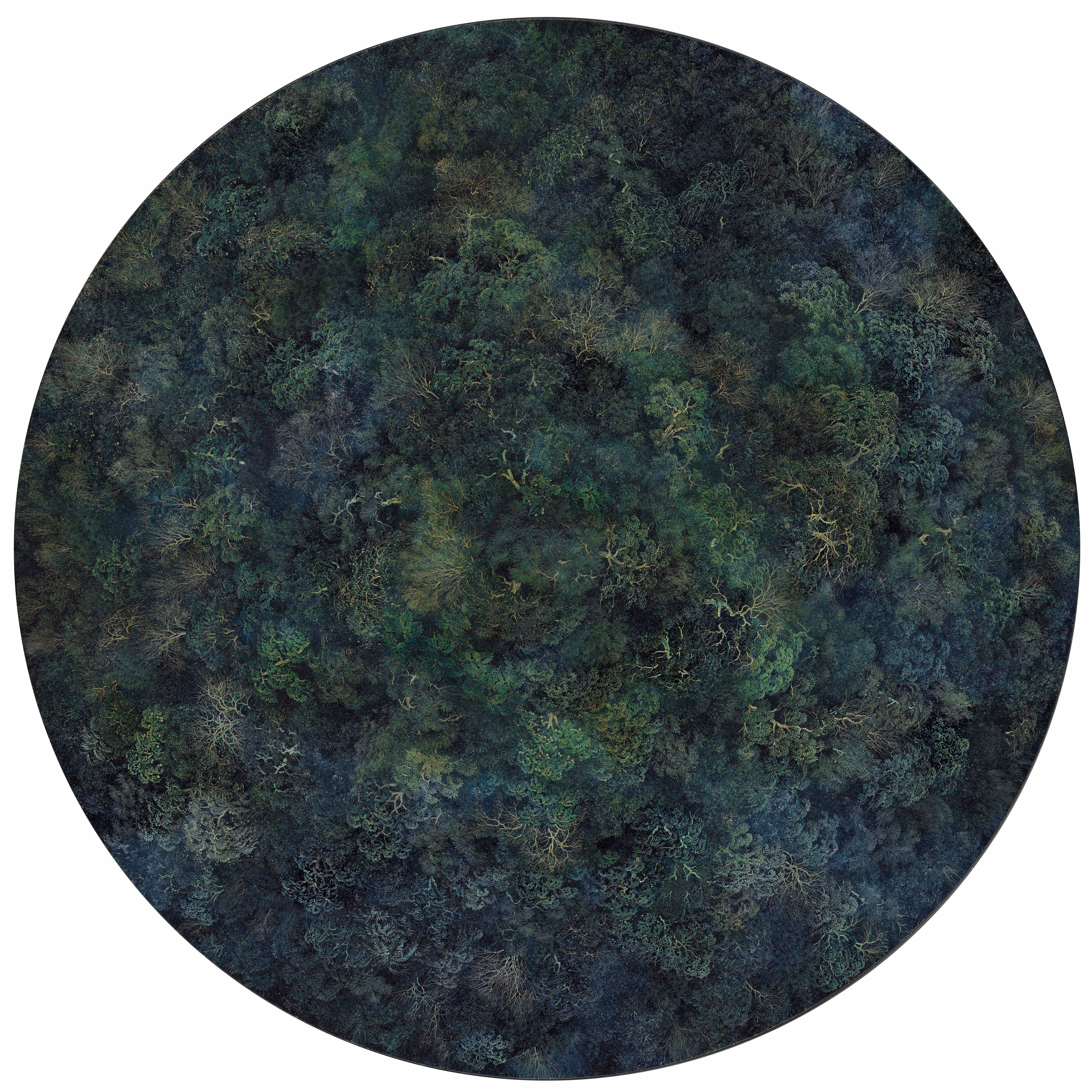 Wu, Kuan-Te_Between Exhalation and Inhalation 2_200x200cm_Oil on Canvas、Rotating Installation_2023.© Ever Harvest Art Gallery
Wu, Kuan-Te_Between Exhalation and Inhalation 2_200x200cm_Oil on Canvas、Rotating Installation_2023.© Ever Harvest Art Gallery
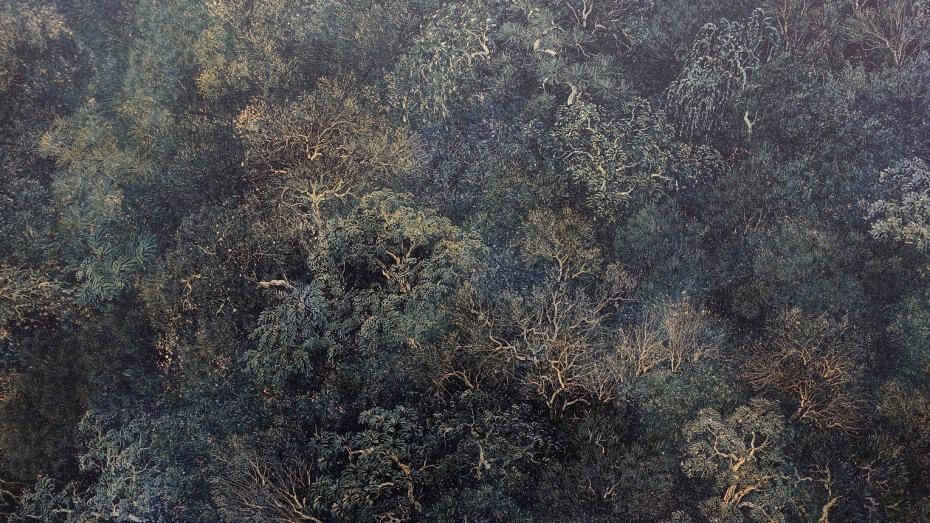 Wu, Kuan-Te_Between Exhalation and Inhalation 2_200x200cm_Oil on Canvas、Rotating Installation_2023.© Ever Harvest Art Gallery
Wu, Kuan-Te_Between Exhalation and Inhalation 2_200x200cm_Oil on Canvas、Rotating Installation_2023.© Ever Harvest Art Gallery
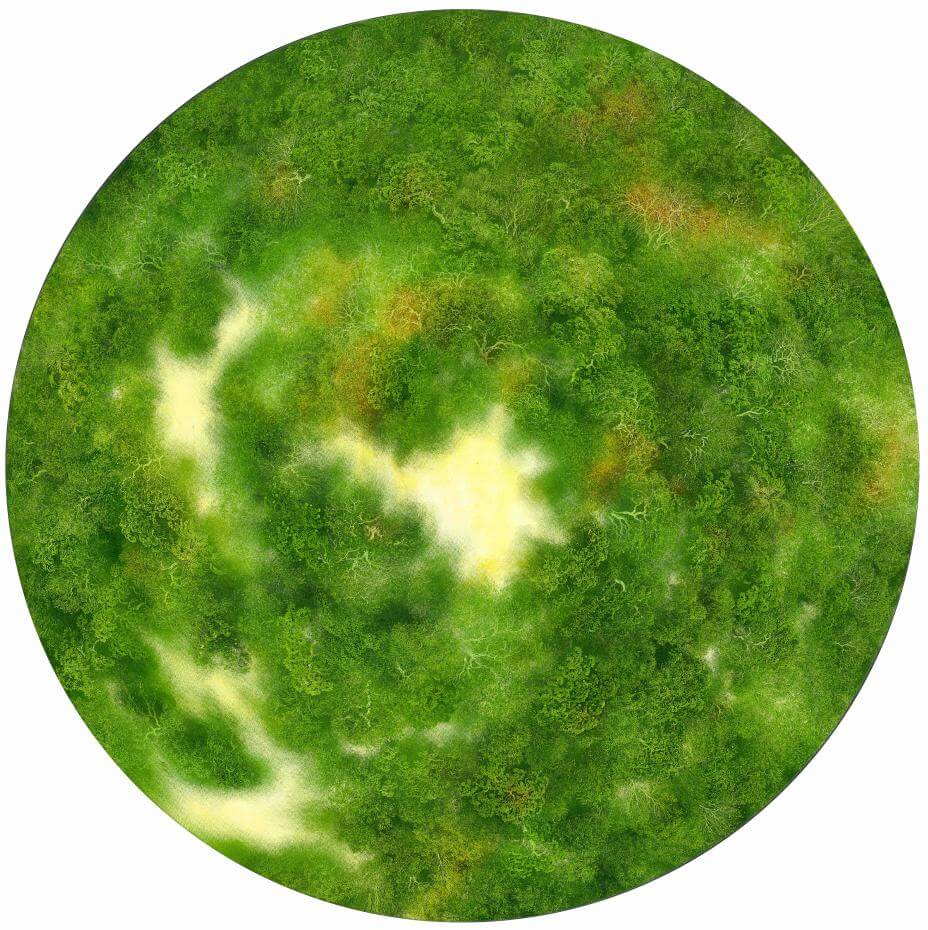 Wu, Kuan-Te_Between Exhalation and Inhalation 4_150x150cm_Oil on Canvas、Rotating Installation_2023. © Ever Harvest Art Gallery
Wu, Kuan-Te_Between Exhalation and Inhalation 4_150x150cm_Oil on Canvas、Rotating Installation_2023. © Ever Harvest Art Gallery
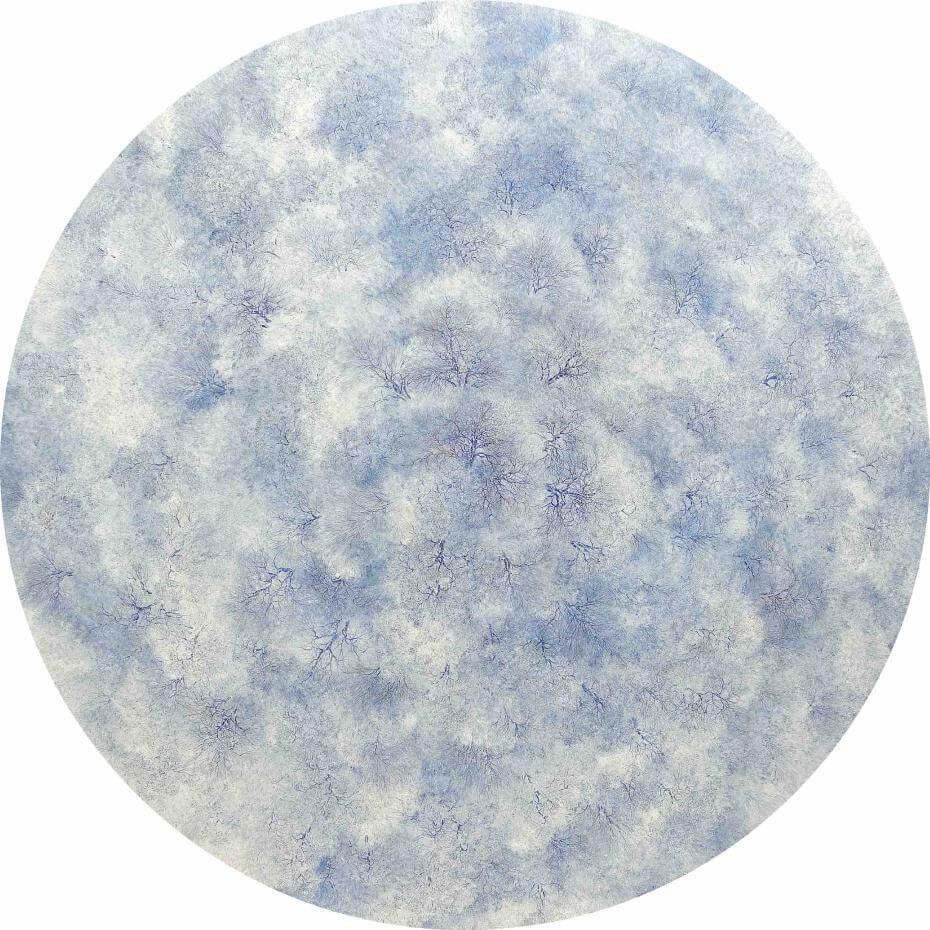 Wu, Kuan-Te_Between Exhalation and Inhalation_180x180cm_Oil on Canvas、Rotating Installation_2023. © Ever Harvest Art Gallery
Wu, Kuan-Te_Between Exhalation and Inhalation_180x180cm_Oil on Canvas、Rotating Installation_2023. © Ever Harvest Art Gallery
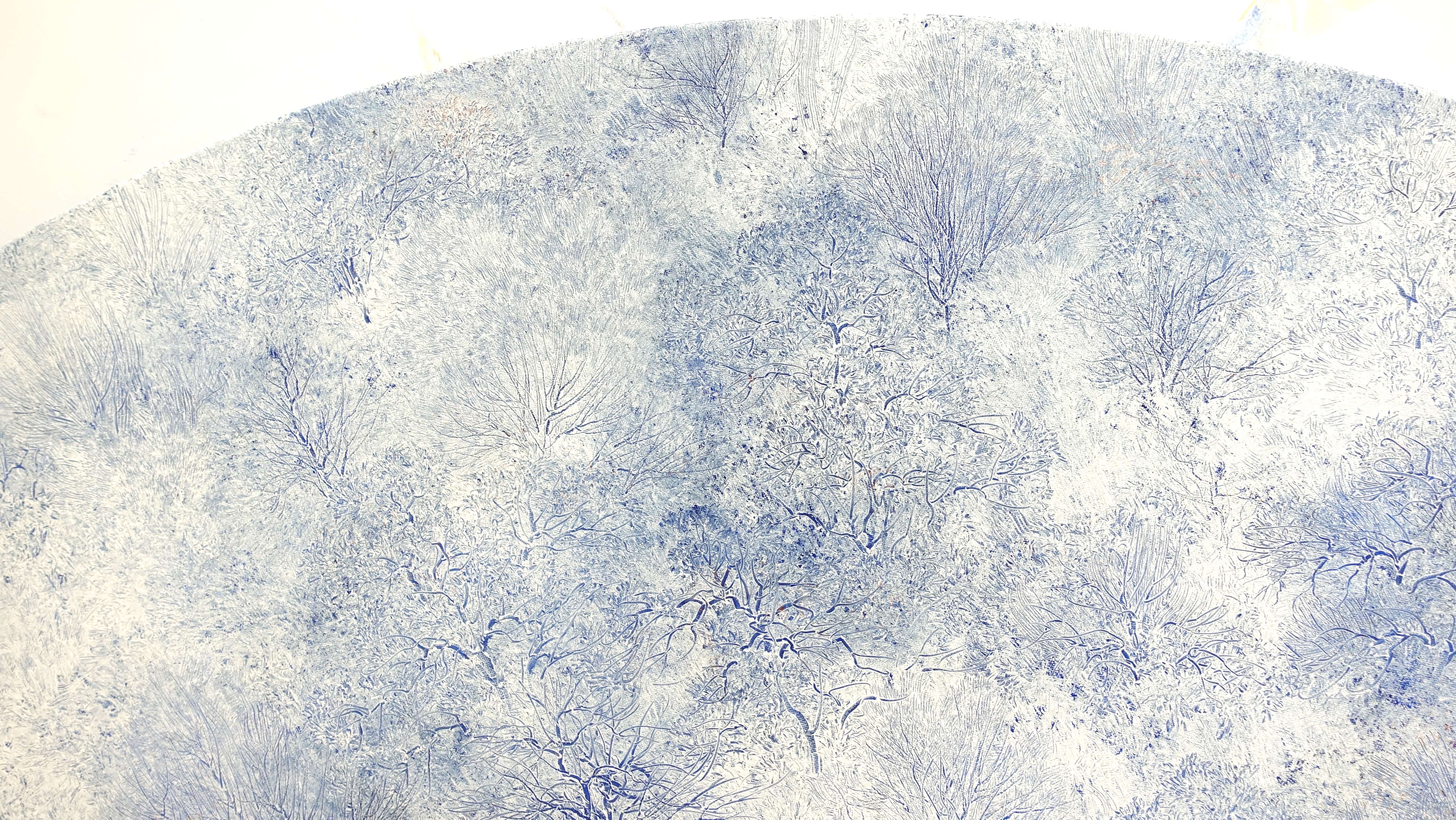 Wu, Kuan-Te_Between Exhalation and Inhalation_180x180cm_Oil on Canvas、Rotating Installation_2023. © Ever Harvest Art Gallery
Wu, Kuan-Te_Between Exhalation and Inhalation_180x180cm_Oil on Canvas、Rotating Installation_2023. © Ever Harvest Art Gallery
Wu has long been absorbed in nature, and the quintessence of nature has permeated his innermost core. However, he does not simply paint landscapes by sketching from nature. Treating the inspiration he draws from Cézanne, Monet, and Abstract Expressionism as the point of departure, Wu blends it with his own philosophy of painting, personality and demeanor, as well as oriental wisdom, and thereby evolves his inimitable creative style which primarily finds expression in his contemplation of painting materials and approaches. Gradually, Wu gets not less interested than Cézanne and Monet in the dialectical relationship between “objects and spirituality.” Nonetheless, instead of imitating natural textures with brushstrokes like Monet or analogizing the composition of nature with color fields like Cézanne, Wu is inclined to using the entire painting to simulate or “reproduce” the genesis and rebirth of nature. Thus, in his paintings, the trees or swards in a compact mass are not based on any drawing or photograph, and Wu even makes no compositional outlines at all. Rather, resembling the genesis of the universe, they emerge in an uninterrupted flow from empty void or chaos amidst the breaths of Mother Nature until the originally blank canvas is fully covered, which is strongly reminiscent of Surrealist automatism. Wu takes a point of view distinct from that of most landscape painters. He on the one hand prefers a bird’s eye view which can be deemed “God’s perspective,” and on the other hand adopts a “human’s perspective” which looks upwards. The relative positions of humanity and nature thus immediately manifest themselves in such a subtle shift of angle. More intriguingly, Wu paints without a brush. After applying layers of pigment in a meticulous fashion, he reveals the colors underneath by scraping off the upper layers of pigment with the twigs, stones, and seeds he collected from nature. Using his own strength and harnessing the softness, hardness, and sections of res naturales, Wu “portrays” the grain which is redolent of branches and leaves as well as the wrinkled texture in oriental landscape paintings. In addition to showcasing his extraordinary skill, the artist substitutes “subtraction” (scraping) for “addition” (layering) commonly employed in traditional oil paintings. The sheer beauty of natural ecology, the vicissitudes of motion and stillness, the evolution of times, and the entanglement between real and virtual spaces are all embodied in the brilliant compositions and coloring of Wu’s works. He depicts all this with compositional ingenuity and colors like gold, blue and red that symbolize the natural elements in the universe (e.g. wind, fire, earth, water, metal, wood, etc.). However, this is not just about the methodology of painting. Wu regards the act of painting as a way to commune with nature.
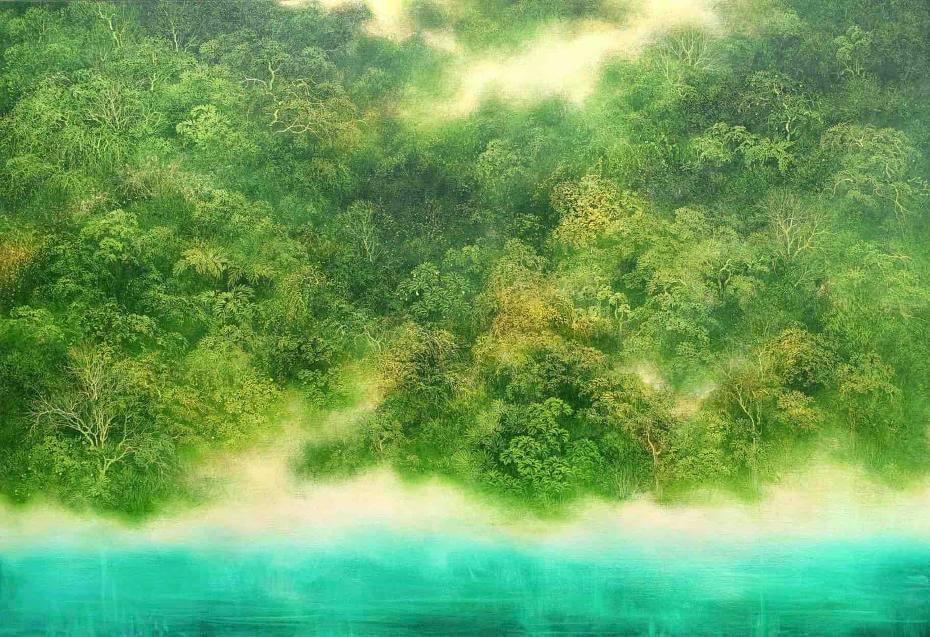 Wu, Kuan-Te_Clarity of Light_80x116.5cm _Oil on Canvas_2021. ©Ever Harvest Art Gallery
Wu, Kuan-Te_Clarity of Light_80x116.5cm _Oil on Canvas_2021. ©Ever Harvest Art Gallery
 Wu, Kuan-Te_Pine Breeze_97x163cm _ Oil on Canvas_2023. ©Ever Harvest Art Gallery
Wu, Kuan-Te_Pine Breeze_97x163cm _ Oil on Canvas_2023. ©Ever Harvest Art Gallery
Subsequently, Wu developed a series of circular paintings. It must be borne in mind that circles are originally a classic in their own right. We can understand how God created the heavens, earth and humankind so long as we think of how the Vitruvian Man by Leonardo da Vinci (1452-1519) unveiled the mystery of body proportions with a circle and a square. Wu’s performance work The Perfect Circle (2002) comprises a circle he drew with light ink at the limit of his body in the daytime and another circle he painted by squatting on the ground and rotating his body with his arm stretching to the extreme at night. “Knowing neither beginning nor end, he didn’t stop repeating the daily performance until his body was integrated with the supreme consummation.”[6] Later, Wu further utilizes the non-directional nature of circular canvases which have no start point and end. Abandoning the customary practice of painters, Wu paints from whatever start point in whichever direction he wants without being restricted by any given spatio-temporal relationship between the canvas and the body in the traditional way of creation. Recently, Wu has underpinned his circular works with kinetic devices. He paints on the slowly rotating canvas, hence the changing interaction between his hands, his eyes, and the canvas. However, through his creative practice, Wu seeks not just to break the stereotypical representation of painting, but also to simulate the seasonal cycle and the endless operation of a practitioner’s body, as well as to breathe together with the painting/Mother Nature and attain the perfect fusion of the Self and objects to the extent of forgetting about each other. Additionally, circular canvases are considered every bit as favorable for homogeneous composition as for the presentation of a field in which forces diverge and converge. Wu’s works thus convey the sense of vastness and timelessness, both converging at the microcosm which encompasses everything, and meanwhile diverging into the macrocosm which is nothing if not boundless. Moreover, this exhibition contains several oval paintings of landscapes and clear reflections on the calm waters. Apart from resuming the thorniest motif in the genre of landscape painting, Wu further invokes the metaphor of mirror image to ignite the dialectical debate over the authenticity of the reality and its own reflection, since these paintings can be hung upside down. By dint of the canvas shapes, colors, compositions, kinetic devices, as well as the intervention and action of his physical body, Wu vividly and thoroughly demonstrates the philosophical concepts that feature prominently in oriental arts, such as imitating nature, endless cycle of life, understated elegance, oneness of heaven and humanity, and so forth.
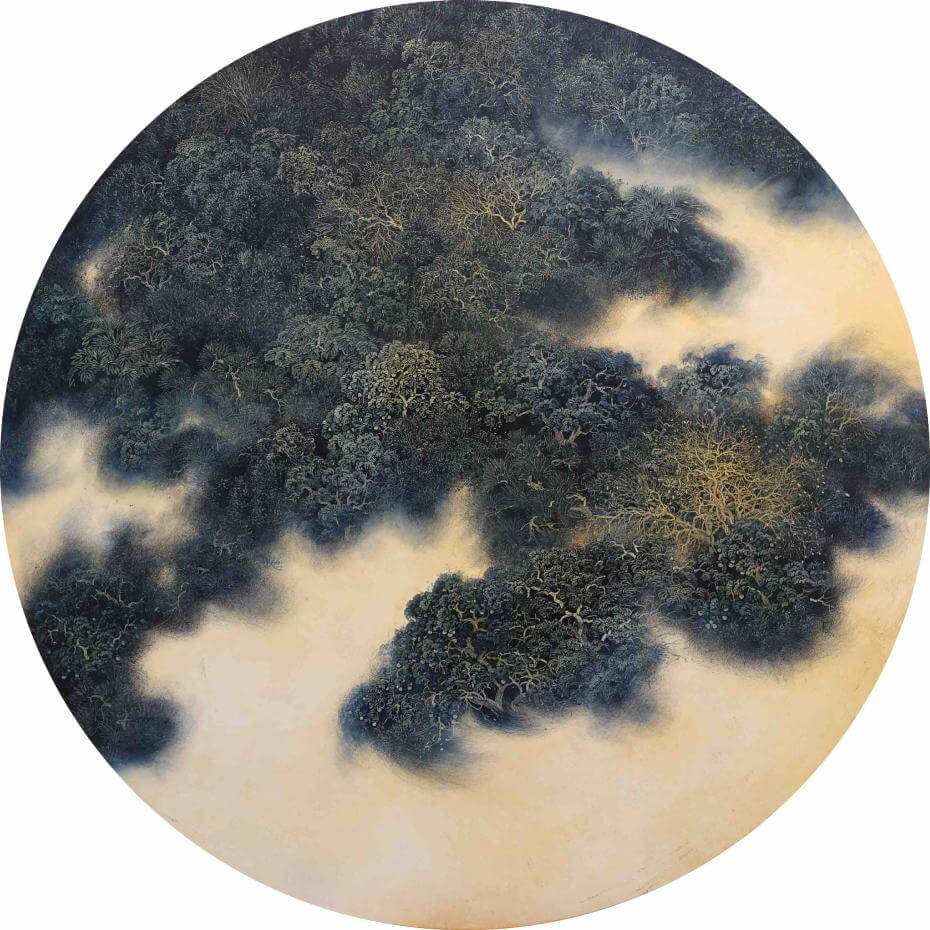 Wu, Kuan-Te_Vigor 4_100x100cm_Oil on Canvas_2022 ©Ever Harvest Art Gallery
Wu, Kuan-Te_Vigor 4_100x100cm_Oil on Canvas_2022 ©Ever Harvest Art Gallery
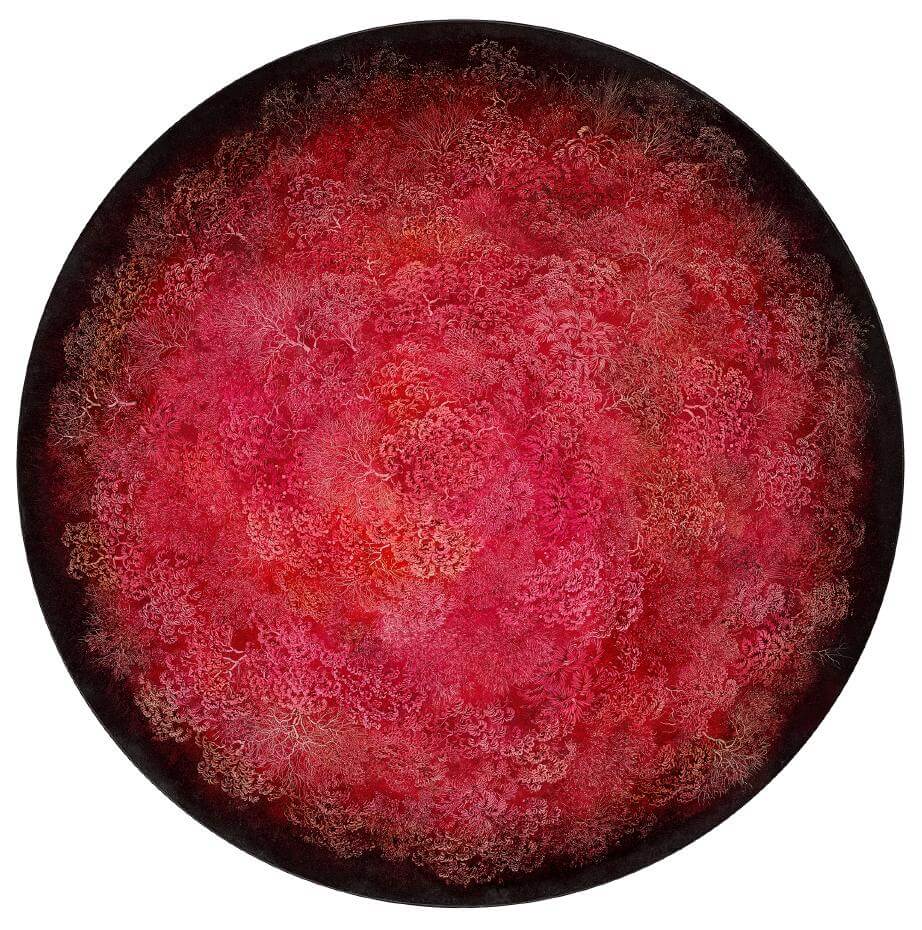 Wu, Kuan-Te_Radiant Essence 5_100x100cm_ Oil on Canvas_2022. ©Ever Harvest Art Gallery
Wu, Kuan-Te_Radiant Essence 5_100x100cm_ Oil on Canvas_2022. ©Ever Harvest Art Gallery
Last but by no means least, we should discuss Wu’s deliberation on the viewer’s gaze. From 2012 to 2014, Wu created three large-scale (2m x 6m) paintings respectively titled To Be With, Symbiosis, and Astral Travel that rival Monet’s magnum opus Water Lilies at the Musée de l’Orangerie. Later, Wu stayed in the seclusion of Su Chiung Art Museum between 2017 and 2018, where he created the spectacular works Limitless (3m x 11m), Back to Original (3m x 9m), and the monument-like scroll Great Awakening (5m x 3m) featuring in this exhibition. These large-scale works are not so much paintings as “environments.” They absorb the viewer into the “environments” in a sheathing, immersive, and even overwhelming manner, which not only alters the subject-object relationship between the viewer and the works, but also creates unprecedented psychological perception and corporeal experience the viewer will remember. To put it another way, Wu’s works open up a sui generis space where the viewer can find meditative tranquility in the hustle and bustle whilst admiring the majestic grandeur of nature. Besides, driven by the hidden kinetic devices, a number of circular canvases rotate at an extremely slow pace, which not only suggests a new way of viewing paintings, but also puts the viewer’s perceptual capability to the test. Wu grew up in an artistic family. The edification from his father’s generation has prompted Wu to commune with nature and to strive for his ideal of intersubjectivity between life and art. Without exception, every viewer is emotionally touched by Wu’s hermetic lifestyle and his affectionate earnestness toward art. His creative practice as a simulation of Mother Nature herself has transcended the conventional definition and confines of “landscape painting.” I would like to audaciously describe Wu’s oeuvre as “flip-flop landscape paintings,” a term not only indicating that his works can be flip-flopped in terms of both creation and appreciation, but also serving as a metaphorical paronomasia for the revolutionary “flip-flop” he has done to the genre of landscape painting.
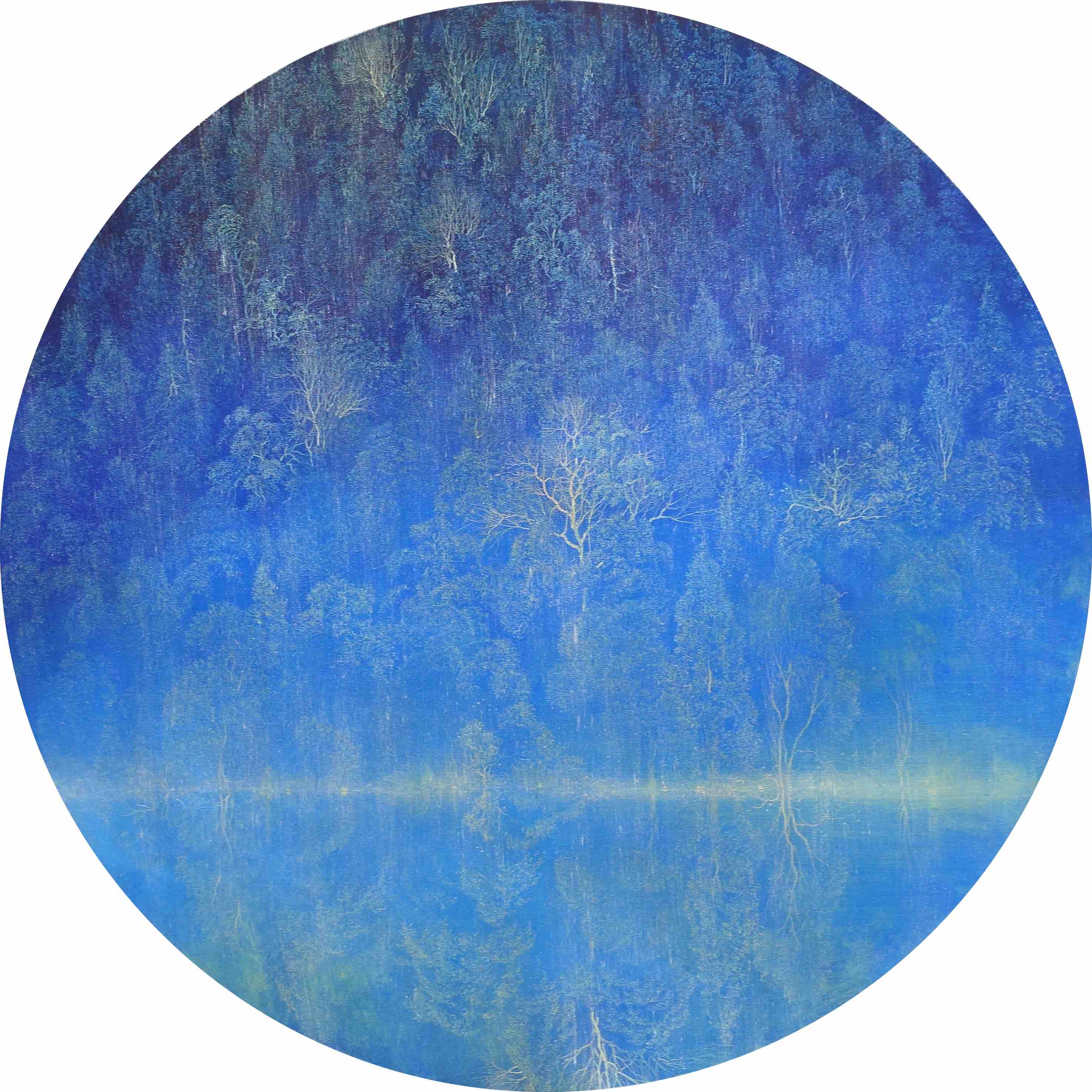 Wu, Kuan-Te_Mirroring Expanse_120x120cm_ Oil on Canvas_2021. ©Ever Harvest Art Gallery
Wu, Kuan-Te_Mirroring Expanse_120x120cm_ Oil on Canvas_2021. ©Ever Harvest Art Gallery
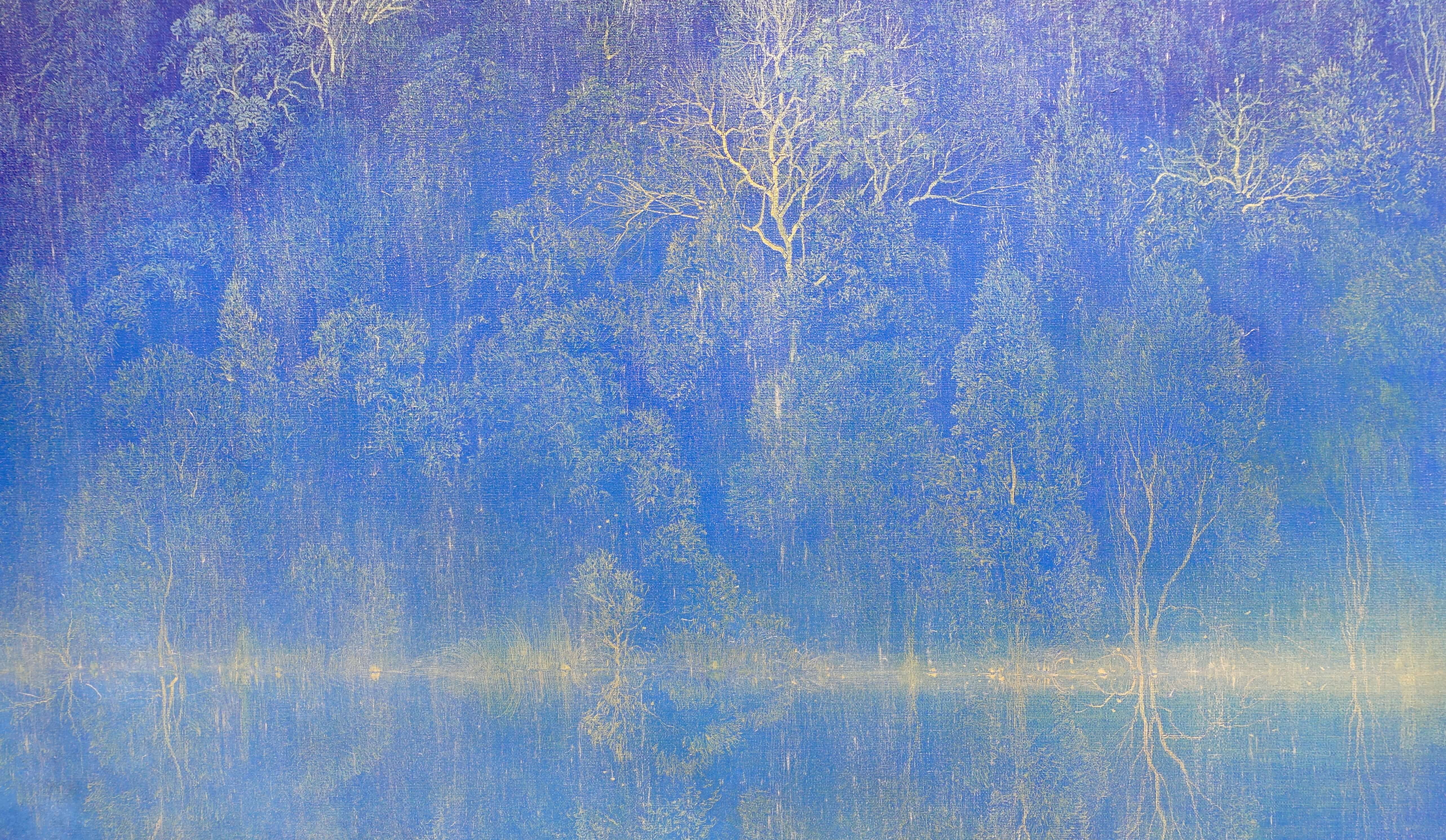 Wu, Kuan-Te_Mirroring Expanse_120x120cm_ Oil on Canvas_2021. ©Ever Harvest Art Gallery
Wu, Kuan-Te_Mirroring Expanse_120x120cm_ Oil on Canvas_2021. ©Ever Harvest Art Gallery
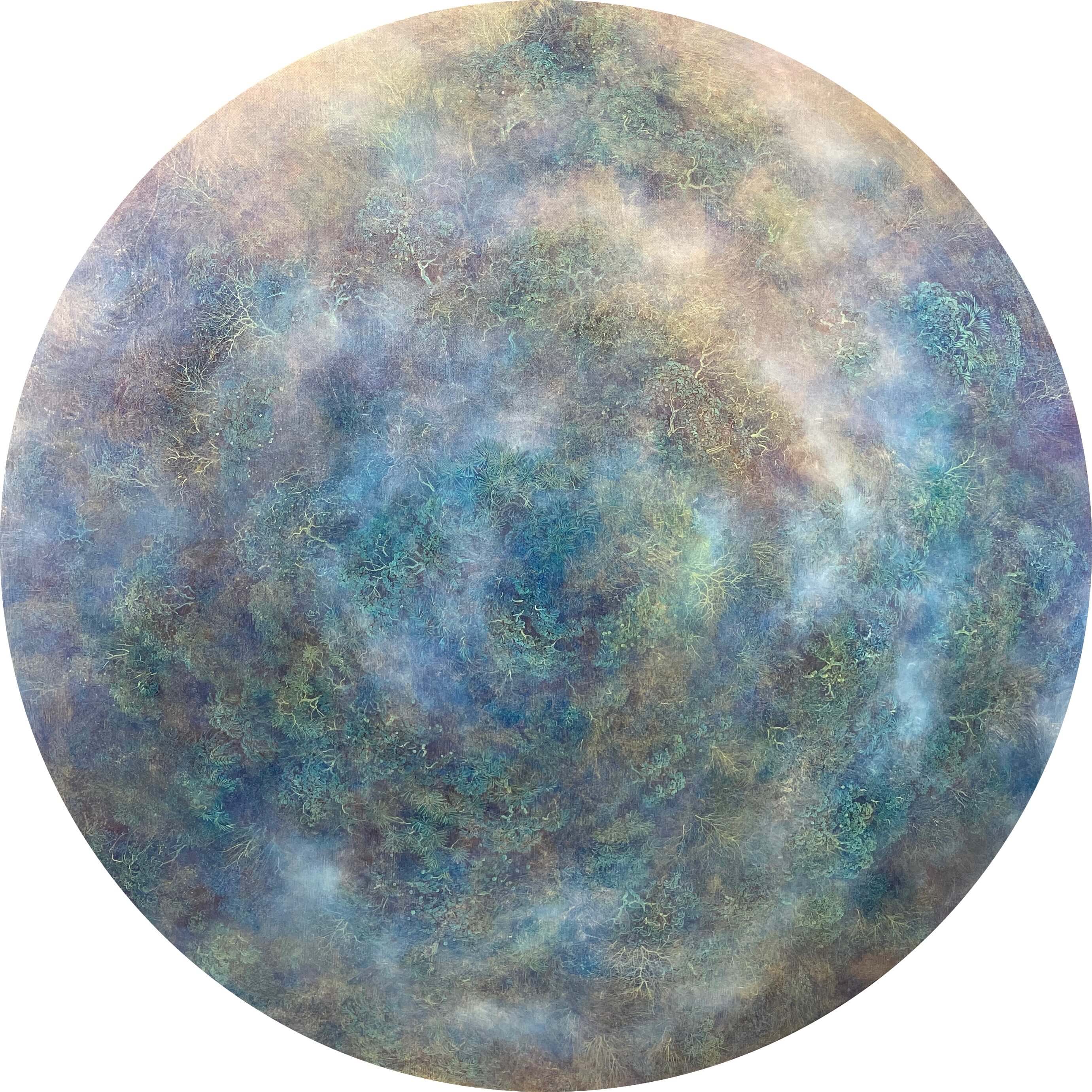 Wu, Kuan-Te_Radiant Essence_120x120cm_ Oil on Canvas_2022
Wu, Kuan-Te_Radiant Essence_120x120cm_ Oil on Canvas_2022
[1] Quoted from an interview with Monet by Thiébault-Sisson in 1900, published in Le Temps, 27 November 1900. Full text available on http://giverny.org/monet/biograph/monet.htm 2011/2/11.
[2] The quote from Eugène Boudin in this paragraph comes from G. Jean-Aubry, Eugène Boudin (Paris, 1922), p. 181, 184, and 194.
[3] Merleau Ponty, Le doute de Cezannes (Paris: Petites Allées, 2016).
[4] Merleau Ponty, L’oeil et l’esprit (Paris: Gallimard, 1964), p. 83. (查無此句,暫依中文原稿翻譯。)
[5] Clément Greenberg, “La crise du tableau de chevalet,” in Art et Culture (Paris: Macula, 1988), pp. 171-175.
[6] Wu Kuan-Te, The Way of Wu Kuan-Te’s Art (New Taipei City: Wu Kuan-Te), 2012, p. 12.
REACTIONS
0
1
0
0
0
熱門新聞
1